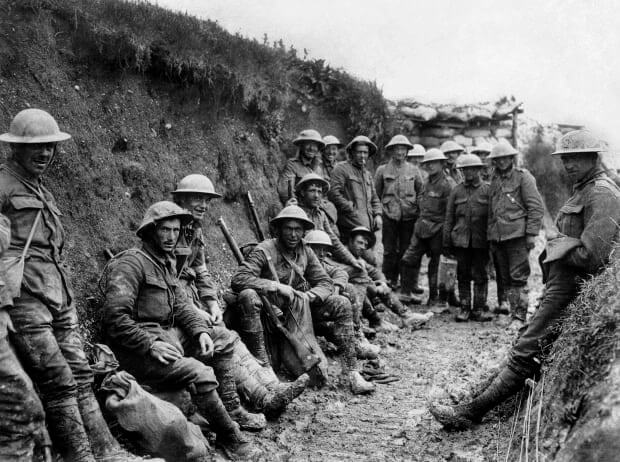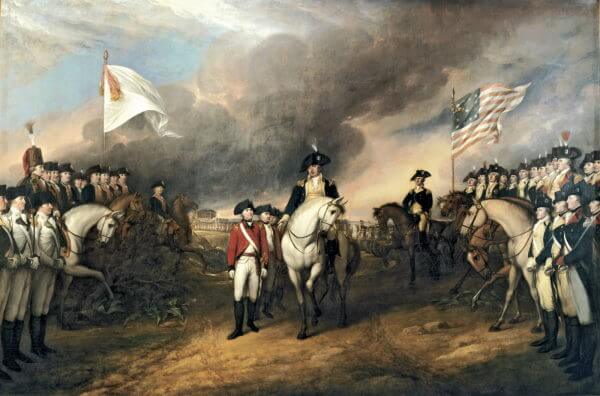World War I

The first World War, the first modern war or the Great War, began with the assassination of Archduke Frez Fendinand – the heir to the throne of Austria-Hungary. World powers in two groups – the Central Powers – Germany, Austria-Hungary, Bulgaria along with the Ottoman Empire fought against the Allied Powers-Great Britain, France, Russia, Italy, Romania, Japan and the United States.
It was an international conflict from 1914 to 1918, leading to the fall of four great imperial dynasties in Germany, Russia, Austria-Hungary, and Turkey. The war saw unprecedented levels of slaughter, carnage and destruction, thanks to the new military technologies of that time. By the time the war got over with the Allied Powers being victorious, more than 16 million (1.6 crore) people including soldiers and civilians — were dead.
Contents
Archduke Frez Fendinand
Troubles and tensions arose in the Balkan region of Europe several years before the actual war broke due to the political instability in the region. A number of alliances involving the Ottoman Empire, Russia and the other countries had existed for years, and the political instability in Balkan threatened to destroy these agreements.
But the event that ignited World War I, took place in Sarajevo, Bosnia, when Archduke Frez Fendinand was assassinated, along with his wife, Sophie, by the Serbian nationalist Gavrilo Princip in the June of 1914. Princip, along with other nationalists, wanted to end the Austrian-Hungarian rule over Bosnia and Herzegovina.
This act started a chain of events: Austria-Hungary, like many countries, blamed the government of Serbia for the attack and used it as a justification for settling the the question of Serbian nationalism forever.
Kaiser Wilhelm II
After Serbia backed the support of mighty Russia for the war, Austria-Hungary waited to declare war until its leaders received assurance from the German leader Kaiser Wilhelm promising Germany’s support for them. They feared the involvement of France and Great Britain as allies of Russia in the war.
On the 5th of July, Germany secretly confirmed their support to Austria-Hungary. The leaders of Austria-Hungary then sent an ultimatum with some harsh terms that were impossible to accept to Serbia, thus making the war seem unavoidable now.
The Great War begins
Seeing Austria-Hungary readying for war, the Serbian government started mobilising its army and appealed Russia for assistance. On July 28, 1914, Austria-Hungary declared a war on Serbia, quickly collapsing peace in the entire world, and especially that in between Europe’s great powers.
Within a week, Russia, Belgium, Great Britain, France and Serbia had line up against Austria-Hungary and Germany, and the war had begun.
The Western Front
Based on the aggressive military strategy known as the Schlieffen Plan, Germany began fighting the war on two fronts, invading France through Belgium in the west and confronting Russia in the east.
On August 4, 1914, German troops entered Belgium and assaulted heavily fortified city of Liege, using enormous siege cannons — the most powerful weapons in their arsenal, to capture the city on August 15. The German left Belgium destructed and then moved towards France, shooting and executing the civilians everywhere.
The Battle of the Marne
The French and British forces confronted the invading German army in the First Battle of the Marne, which lasted from 6th to 9th of September 1914, when the German had entered northeastern France, and reached within 30 miles of Paris. The Allied troops were successful in executing the counterattack and drove the Germans back to the north of the Aisle River.
This defeat shattered the German plan for a quick victory in France.
The Eastern Front
The Russian forces invaded the German-occupied territories of east Prussia and Poland, on the Eastern Front of World War I, but were stopped short by German and Austrian forces in late August 1914.
Despite the victory, Germany was forced to move backwards, from the Western front to the Eastern, contributing to their loss in a way. The fierce force of Allied resistance combined with the ability of Russian war machinery in France failed the dreams of Germany to win under the Schlieffen Plan.
America enters World War I
The United States remained on the sideline of the war, under President Wilson, by adopting the policy of neutrality, and continued to engage in trade and commerce with both sides of the conflict.
Neutrality brought trouble for US with the onset of Germany’s unchecked submarine aggression against neutral ships. In 1915, German submarines sank several commercial and passenger vessels, including some U.S. ships that included American passengers too. In February 1917, congress passed a $250 million arms appropriations bill intended to make the United States ready for war.
As we all know, in the early 20th century especially during the times of World War I, Britain’s Royal Navy was unchallenged by any other nation’s fleet. Germany’s Navy was the next in line and was closely equal to the Royal Navy’s capabilities.
The biggest naval engagement of World War I, the Battle of Jutland (1916) left the supremacy of the Royal Navy intact on the North Sea, leaving Germany with a lesson to never break in Allied naval blockade for the remainder of the war.
Second Battle of the Marne
On July 15, 1918, the German troops launched what is now known to be the last German offensive of the war, by attacking the French forces (joined by 85,000 American troops and some of the British Expeditionary Force) in the Second Battle of the Marne. The Allies successfully pushed back the German offensive and launched their own counteroffensive just three days later.
Germany was forced to call off planned offensives in further north due to massive casualties. The Second battle of the Marne worked in the favour the the Allies, who were then able to regain much of the France and Belgium in the months that followed.
Towards Treaty
By the fall of 1918, the Central Powers could see themselves losing in front of the Allies.
The Ottoman kingdom and its economy was destroyed by the invading forces and the Arab revolts. The Turks signed a treaty with the Allies in October 1918.
The condition of Austria-Hungary was also degrading from within due to the growing nationalist movements among its diverse population. This situation along with the losses in the battlefield weakened the country’s position the the war. Seeing the diminishing resources in the war, discontent from homeland and the surrender of its allies, Germany was finally forced to seek a treaty with the Allies on November 11, 1918, ending the World War I.
The Treaty of Versailles and the League of Nations
The Allied leaders, at the Paris Peace Conference in 1919, stated their desire to safeguard the world from more of such wars of devastating scale in the future. Some of the hopeful participants called the World War I ‘‘the War to End All Wars’’.
The Treaty of Versailles was signed in June 1919. It codified peace terms between the victorious Allied countries and Germany and held Germany responsible for starting the war. It imposed harsh penalties on the country in terms of loss of territory, massive reparation (compensation for the harm done) payments and demilitarisation (remove all military forces from an area). Many state that the Treaty of Versailles humiliated Germany while far from resolving the main issue that had led to the war in the first place. The economic distress and resentment of the treaty within Germany contributed in fuelling the ultra-nationalist sentiments that eventually led to the rise of the Nazi party, Adolf Hitler and the subsequent World War II just two decades later.
The League of Nations was an international diplomatic group formed after the World War I as a way to solve disputes between countries before they involved themselves into open warfare. Germany was not allowed to be a part of this council as one of its punishments. The League of Nations ultimately failed to fulfil its role with the commencement of another World War in 1935.
Casualties
World War I, often shortened as WWI, took the lives of more than 9 million (90 Lakh) soldiers; 21 million (2.1 Crore) more were wounded and 10 million (1 Crore) civilian causalities were recored. Two of the most affected nations were Germany and France, each of which sent about 80 percent of their male population between the ages of 15 and 49 to the battlefield.

Reference : www.history.com
Quiz Time!
- Give 2 more names of World War I.
- Name the member countries of the Central and Allied powers.
- Which event is believed to be the main reason that ignited WW1?
- Which aggressive military strategy was used by Germany to confront France and Russia?
a. the Belgium Plan b.Schlieffen Plan c.the Fendinand Plan d.the Plan of Kaiser Wilhelm
5. Defeat in which battle shattered the German plans of attaining victory in France?
a.The Battle of the Marne b.Second Battle of the Marne c.the Battle of Jutland
6. Describe the Treaty of Versailles.
7 . Fill in the blanks.
a. ________ was not allowed to be a part of The League of Nations as one of its punishments.
b. World powers in two groups – the Central Powers – ________, __________, ________ along with the ________ Empire fought against the Allied Powers-G________,F______,R_______,I____, R______, J____ and the United States.
c. ____________ was unchallenged by any other nation’s fleet. _________ was the next in line and was closely equal to the _________ capabilities.





Responses